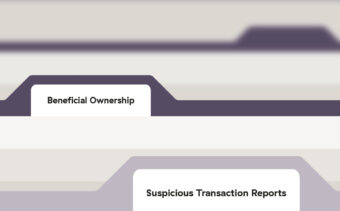
eWallets are online storage systems that hold users’ banking information and can be used to pay for goods and services, often in conjunction with mobile payment systems. Use of eWallets and “mobile money” has grown rapidly since 2017 as the […]

eWallets are online storage systems that hold users’ banking information and can be used to pay for goods and services, often in conjunction with mobile payment systems. Use of eWallets and “mobile money” has grown rapidly since 2017 as the […]

Why is P2P Money Laundering Becoming More Prevalent? Advances in fintech have allowed for the development and widespread uptake of a variety of online financial services, including peer-to-peer lending and crowdfunding, both of which have grown to represent multi-billion dollar […]

As banks and non-bank financial institutions explore new, innovative methods with which to deliver financial services, digital lending has emerged as an opportunity for those organizations to loan money faster and more efficiently. Digital lending is essentially the use of […]

As banks and other financial institutions embrace advances in financial technology, the digital banking sector has grown dramatically. That growth trend has been reinforced by the coronavirus crisis, which saw a 200% increase in mobile banking registrations in April 2020. […]

The money remittance industry is growing. In 2018, global remittances reached $689 billion: a figure that is expected to reach $746 billion in 2020. The trend is driven, in part, by digital remittance services, which are expected to see a […]

Foreign currency exchange (FX) is a popular methodology for money launderers, who seek to exploit a range of vulnerabilities associated with the service. The growing volume of FX businesses across the banking and commercial sectors, on Main Streets and online, […]

Banks and other financial institutions (FIs) must implement an anti-money laundering (AML) compliance program to detect and prevent money laundering and terrorism financing activities and satisfy their associated regulatory obligations. Given the administrative burden and the need to manage their […]

Canada has a history of underperformance with respect to following Anti-Money Laundering (AML) and Anti-Terrorist Financing (ATF) best practices, but the country has consistently improved to close the gap. Based on the findings of FATF’s most recent mutual evaluation, it […]

The Philippines is one of the Asia Pacific (APAC) region’s most prominent business destinations and a global hotspot for FinTech and financial services. Ranked as one of Southeast Asia’s favored investment destinations, the Philippines attracted over USD2.44 billion of foreign […]

Technology, regulation and the future of financial crimeIn our annual industry report here at ComplyAdvantage, we explore how technology and politics are set to shape financial crime compliance. We identify key AML Compliance trends and issues you need to watch out for in 2020.

Save time, save money: Automate your AML client onboarding process When banks and financial institutions take on new customers and clients, they must also consider a range of important regulatory requirements in order to detect and prevent potential money laundering […]

Transaction monitoring can be a challenging compliance obligation: firms must collect and analyze large amounts of customer data to spot potential money laundering activities promptly and accurately. In practice, transaction monitoring involves scrutinizing customer accounts for a range of indicators, […]